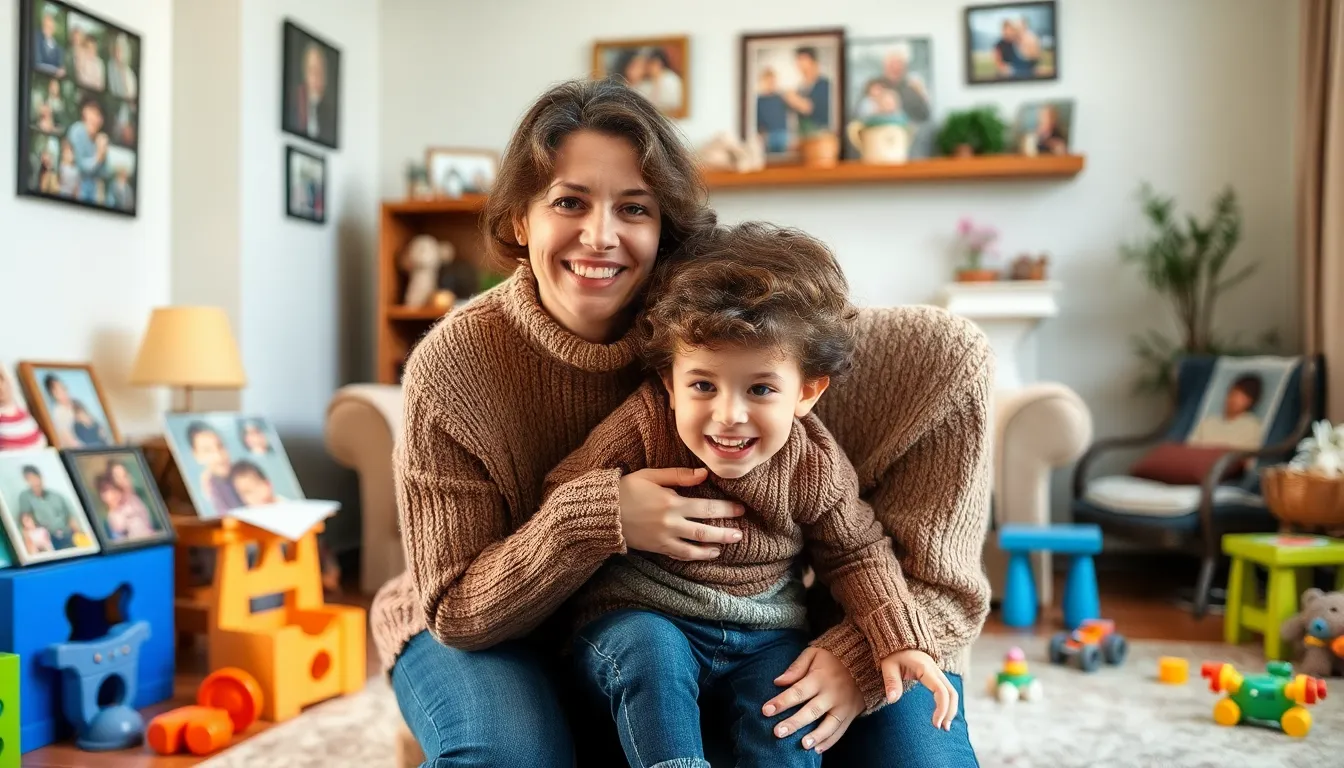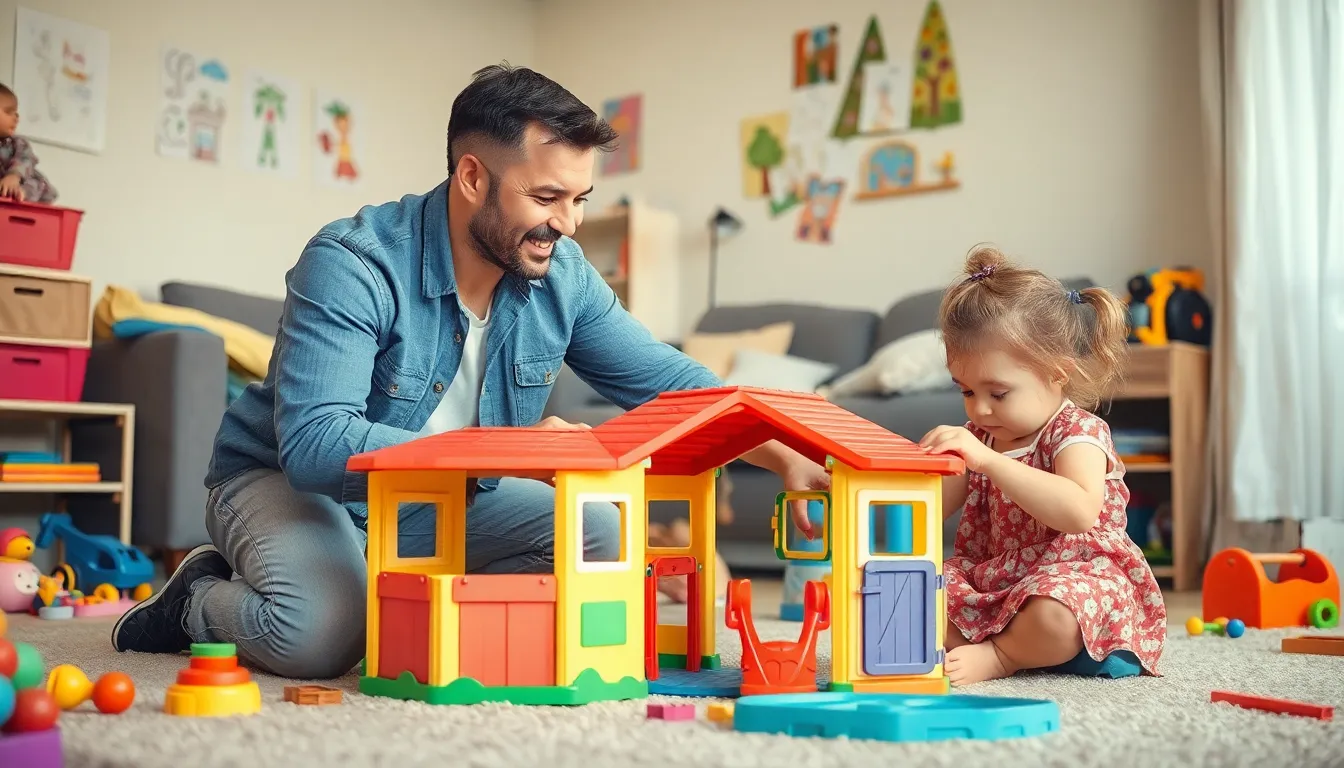Talking to kids about adoption can feel like navigating a minefield—one wrong step and you might end up in a sticky situation. But fear not! This conversation doesn’t have to be daunting. With the right approach, it can be a heartwarming journey filled with love and understanding.
Table of Contents
ToggleUnderstanding Adoption
Adoption is a significant process that creates loving families and provides children with new opportunities. Explaining adoption to kids requires clarity and sensitivity.
What Is Adoption?
Adoption is a legal process in which an individual or couple becomes the legal parents of a child. This arrangement provides a permanent family for the child, along with rights and responsibilities. Adoptive parents and children enjoy the same legal relationship as biological families. Kids need to know that adoption is not about abandonment; rather, it signifies a new beginning filled with love and support. This understanding helps create a positive perspective on the adoption experience.
Types of Adoption
Several types of adoption exist, each serving unique needs. Domestic adoption involves adopting a child from within the same country, often through foster care or private agencies. International adoption occurs when families adopt children from different countries, often requiring adherence to both U.S. and foreign laws. Foster care adoption allows children in the system to find permanent homes. Open adoption maintains some contact between biological parents and the adoptive family, which can benefit the child. Each type offers different considerations and benefits, ensuring families can choose the right path for their situation.
The Importance of Open Conversations
Open conversations about adoption strengthen the bond between a parent and child. Speaking openly promotes understanding and trust.
Building Trust with Your Child
Trust forms the foundation of a strong parent-child relationship. Making time for discussions encourages children to express their feelings without fear. Prioritizing honesty creates an environment where kids feel safe asking questions. She or he should respond with patience and empathy, acknowledging any concerns. Young adoptees need reassurance that their feelings matter. Demonstrating openness fosters a lifelong dialogue about their identity, family history, and experiences.
Normalizing the Topic
Normalizing conversations about adoption eases anxiety for both parents and children. Treating adoption as a regular topic helps kids feel more comfortable discussing their feelings. Using everyday moments to introduce the subject creates a natural flow in dialogue. Sharing stories about other families, including adopted ones, can spark interest and connection. Incorporating books or movies featuring adoption in the storyline educates while entertaining. Reinforcing the idea that adoption is one way to create a family fosters acceptance and understanding in the child.
Tips for Talking to Kids About Adoption
Engaging in conversations about adoption requires sensitivity and thoughtfulness. Following these tips can help facilitate these important discussions.
Age-Appropriate Language
Communicating with children about adoption demands age-appropriate language. Young kids benefit from simple words that directly convey the message. For instance, describing adoption as a special way to form families fosters understanding. As children grow, introducing more complex concepts, such as the emotions involved, becomes feasible. Tailoring explanations to their developmental stage ensures clarity while allowing the child to process information at their own pace. Utilizing stories or examples from daily life can further enhance comprehension.
Encouraging Questions
Questions from children should never feel discouraged. Encouraging curiosity promotes open dialogue about adoption. Letting kids know their thoughts and feelings matter builds a trusting environment. Phrasing questions in a way that shows willingness to listen invites continued discussion. Specific inquiries like “What do you think about our family story?” can spark valuable conversations. Validating their feelings or concerns demonstrates understanding and patience. Addressing questions directly without evasion fosters a feeling of safety, laying the groundwork for deeper conversations in the future.
Addressing Common Concerns
Discussing adoption may bring up concerns parents need to address. A few common anxieties often emerge during these conversations.
Fear of Rejection
Children may fear rejection, especially in adoption scenarios. Parents should acknowledge these feelings as valid. It’s crucial to reassure kids that love remains unconditional despite their concerns. Offering consistent support creates a safe environment where children can express worries freely. Parents might share stories showcasing families formed through adoption, highlighting the love and connection they share. Open dialogue about these fears promotes understanding and strengthens relationships. It eases anxiety, allowing children to feel secure within their families.
Identity and Belonging
Questions of identity and belonging often arise in discussions about adoption. Many children wonder where they fit in their families. Encouraging conversations about individual backgrounds fosters a sense of belonging. Sharing personal stories that celebrate adopted children’s unique paths strengthens familial bonds. Parents can help children explore their heritage while emphasizing that love forms the foundation of their family. Providing resources, such as books and support groups, can also aid in navigating these topics, making children feel seen and understood. Acceptance of diverse identities contributes to children’s self-esteem and confidence.
Resources for Parents
Parents seeking to communicate effectively about adoption find valuable tools in several forms of resources. These aids can enhance understanding and support for both parents and children.
Books and Literature
Numerous books cater to different age groups, addressing adoption in engaging and relatable ways. Titles like “Tell Me Again About the Night I Was Born” and “The Family Book” offer age-appropriate narratives, helping young children grasp the concept easily. For older kids, “Inside Out” tackles more complex themes surrounding identity and belonging. Parents often find that reading together fosters open dialogue, encouraging kids to ask questions about their unique experiences. Literature serves as a gentle introduction, allowing discussions to flow naturally and creating an inviting atmosphere for deeper conversations.
Support Groups
Support groups provide crucial connections for parents grappling with adoption-related conversations. They allow parents to share experiences, seek advice, and gain insights from others in similar situations. Organizations like the National Adoption Center and local community groups often host meetings that focus on adoption education and support. These gatherings foster a sense of belonging, assuring families they’re not alone in their journey. Engaging in peer discussions can enhance confidence in addressing fears and doubts surrounding adoption. Ultimately, these networks establish a supportive environment that benefits both parents and children, reinforcing the family bond.
Conclusion
Talking to kids about adoption is a journey filled with love and understanding. By fostering open communication parents can create a safe environment where children feel comfortable expressing their thoughts and emotions. This not only strengthens their bond but also helps children navigate their feelings about identity and belonging.
Utilizing age-appropriate resources and encouraging questions can make these discussions easier and more meaningful. Ultimately, embracing the topic of adoption as a normal part of family life lays the groundwork for a supportive and trusting relationship. With patience and care parents can guide their children through this important conversation, ensuring they feel loved and secure.







